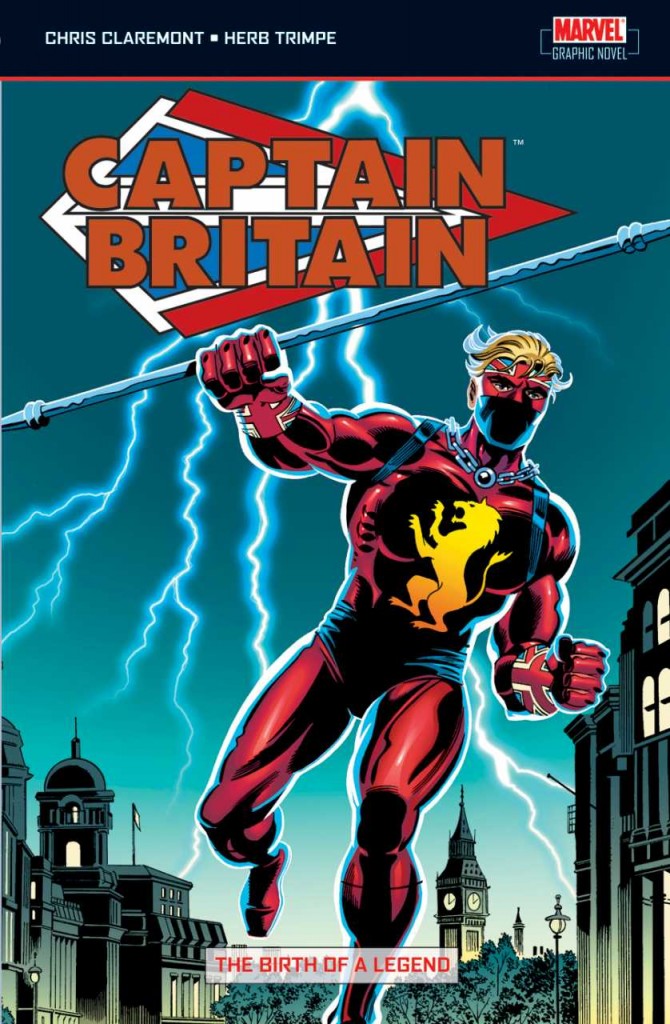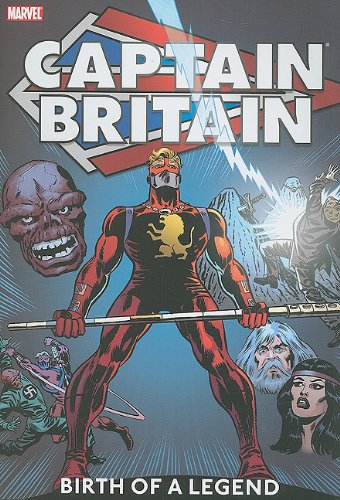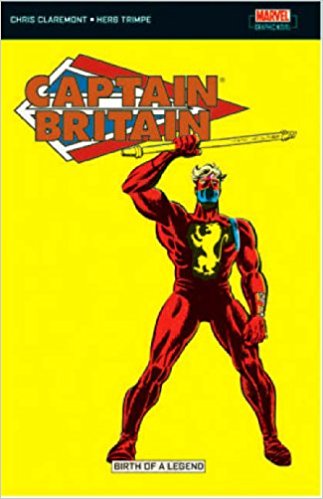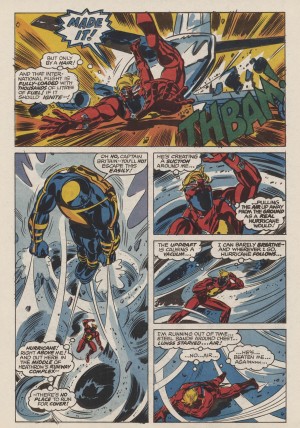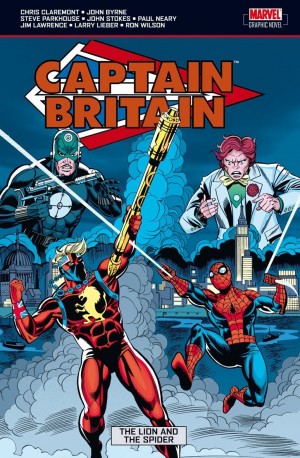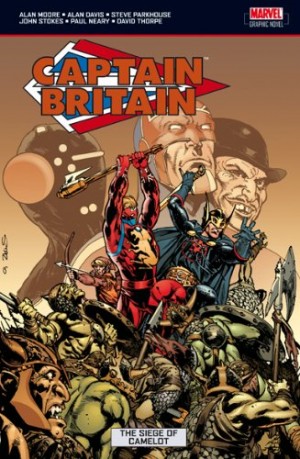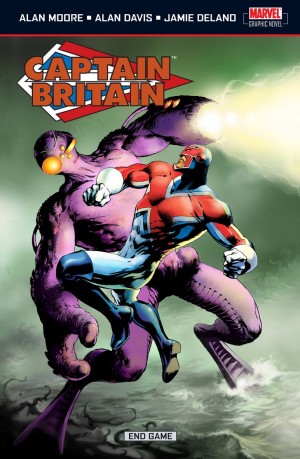Review by Ian Keogh
UK publications re-issuing Marvel’s US material had been running for four years before the plunge was taken into presenting an original strip specifically generated for the UK market. This followed the predominant British anthology format with an eight page Captain Britain lead strip backed up by the adventures of other characters, and the traditional free gift was supplied with the first issue. This collection includes a reproduction of the mask given away in 1976 should you choose to cut it out of your graphic novel and masquerade as Captain Britain. No elastic band is supplied!
If Marvel couldn’t employ British creators on the strip, Chris Claremont, then not long into his career, was a renowned Anglophile and was at least born in London, and artist Herb Trimpe was at the time living in a lighthouse in Cornwall. The launch was a really big deal, with Stan Lee being sent over to the UK to promote the comic.
So much for the history. How does it read today? Well, an idea of how the strip chimed with the times is represented by our hero, university student Brian Braddock, being a pipe smoker in 1976 as Britain’s disaffected youth turned punk. Both creators work very much with the template of Marvel superhero comics from a decade previously. Claremont’s origin and background to Captain Britain is a fusion of those of Spider-Man and Thor. He’s heavy on the cod-Shakespearean dialogue alternating with fractured sentences indicating stress and jocular patter mid-fight, and Trimpe’s layouts imitate Jack Kirby’s storytelling, although are less dynamic and more cluttered. The result is genre material that fills pages, but little more over the first ten episodes. Claremont remained fond of several of the supporting cast and would later use them elsewhere.
With Claremont’s talents recognised in the USA, the Captain Britain strip was handed to Gary Friedrich, and this results in improved plots, although his dialogue can be awful and there’s little other than the kidnapping of then Prime Minister Jim Callaghan to indicate the UK. Still, the way in which Claremont legacy Dr Synne is defeated is still unusual, a depth is added to Brian via an accident from his past, and there are plenty of twists to a plot teaming Captain Britain and Captain America against the Red Skull. This coincides with Trimpe being more comfortable using his own style rather than imitating Kirby. There’s no pretending these are great stories in the 21st century, but there’s more life to them than those written by Claremont.
The arbitrary point at which the collection ends is odd. The Red Skull story only has another 32 pages to run, albeit without colour, and anyone buying this graphic novel alone will have no idea how Captain America and Captain Britain survived seemingly certain death five chapters before the end. An editorial note promises it’ll be explained when there’s a break in the action. For that you’ll also have to pick up A Hero Reborn. Alternatively both volumes are combined in a 2011 American hardcover edition also titled Birth of a Legend.
While the material might not be top notch, the presentation is commendable, with recollections from Claremont and Trimpe, production sketches and reproduction of contemporary promotional material. You’d have to be a rabid Captain Britain fan with income to burn to want this now, but unlike some 21st century Marvel graphic novels, there’s a level of respect involved.
